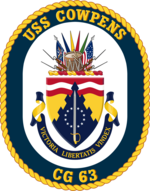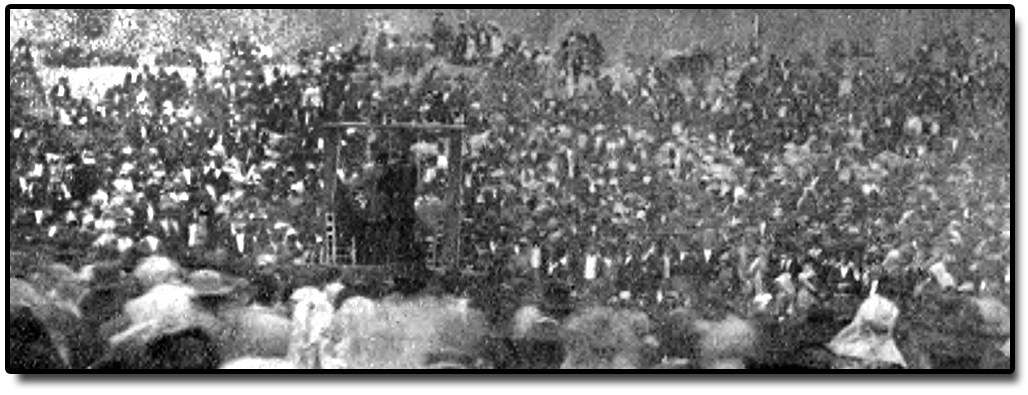VICTORY AT COWPENS ~ Yes, Cow Pens!
William Corder
5th Great Grandfather
Born ~ Fauquier, Virginia around 1732
Died ~ Caswell County, North Carolina in 1781
at the Battle of Cowpens Revolutionary War
William married Phoebe Boudin (my 5th Great Grandmother)
in 1755 in Fauquier, Virginia. (There is some doubt as to her last name - still searching for definitive proof.) I have just begun truly researching the Corder Family connection to my ancestry; but I found William's story interesting and wanted to post. I LOVE HISTORY - not just family history (my dead people stories as my daughter calls them). How in the world had I not heard of this paramount event from the Revolutionary War?
I guess better late than never!
Born ~ Fauquier, Virginia around 1732
Died ~ Caswell County, North Carolina in 1781
at the Battle of Cowpens Revolutionary War
William married Phoebe Boudin (my 5th Great Grandmother)
in 1755 in Fauquier, Virginia. (There is some doubt as to her last name - still searching for definitive proof.) I have just begun truly researching the Corder Family connection to my ancestry; but I found William's story interesting and wanted to post. I LOVE HISTORY - not just family history (my dead people stories as my daughter calls them). How in the world had I not heard of this paramount event from the Revolutionary War?
I guess better late than never!
William Corder (1732 - 1781)
5th great grandfather
daughter of William Corder
daughter of Sarah "Sally" Corder
son of Asenath Stone
son of William Herbert Allison
son of William Carter Allison
son of William Luther Allison
William Corder fought at the Battle of Cowpens (a frontier pastureland located in present-day South Carolina north of Spartanburg) on January 17, 1891.
Brigadier General Daniel Morgan led the tough Continentals and backwoods militia to a vital victory over Banastre Tarleton's (Tarleton was known as 'bloody-Tarelton) battle-hardened force
of British regulars.
of British regulars.
Brigadier General DANIEL MORGAN
by Charles Willson Peale, courtesy of Independence National Historical Park.
THE BATTLE
Morgan called for militia to join him at the Cow Pens which was well known to the settlers of that day. Almost 500 men from North Carolina, South Carolina and Georgia. Morgan’s task was to make his highly vulnerable men an integral part of the operation. Morgan moved from campfire to campfire telling the men what he expected of them in the battle. Morgan himself was a sharpshooter and he positioned sharpshooters with their long rifles ahead of the lines, asking them to aim for the epaulets; in other words, shoot the officers and sergeants.
As Tarleton's men attacked, Morgan instructed the militia to skirmish with them, but to leave the front line after firing two rounds. The British mistook the repositioning of the Americans as a rout (a retreat) and ran into an unexpected volley of concentrated rifle fire coupled with a cavalry charge and followed by the return of the militia. Tarleton escaped, but Morgan's troops decimated his army.
American rifles, scorned by Britain's professional soldiers, proved devastatingly effective in this engagement. The British lost 110 men and more than 200 more were wounded, while an additional 500 were captured. The American losses totaled only 12 killed and 60 wounded in the first Patriot victory to demonstrate that the American forces could outfight a similar British force without any other factors—such as surprise or geography—to assist them.
Cowpens came on the heels of a decisive defeat at Kings Mountain the previous October, and was one of the Revolutionary War's most important battles.
It was here in the 'Cow Pens' pasturing area that an unexpected defeat pretty much sealed the fate of Cornwallis' Army, which surrendered at
Yorktown just nine months later.
Yorktown just nine months later.
Two U.S. military ships were named in memory of the Battle of Cowpens.
The first USS Cowpens, an aircraft carrier, served in World War II.
Both vessels were nicknamed 'Mighty Moo'.
USS COWPENS 
Underway At Sea on July 17, 1943
Class: INDEPENDENCE
As built: Displacement: 11,000 tons (15,100 fl) — Dimensions: 600' wl (622' 6" oa) x 71' 6" (109' 2" fd) x 26' (max) / 182.9 wl (189.7 oa) x 21.8 (33.3 fd) x 7.9 (max) meters — Armor: 1.5"-5" belt, 3" main deck, 0.38" bridge — Power plant: 4 565-psi boilers, 4 geared turbines, 4 screws; 100,000 shp — Speed: 31.6 knots — Endurance (design): 12,500 nm @ 15 knots — Armament: 26 40-mm (2x4, 9x2); 16 20-mm — Aircraft: 30+ — Aviation facilities: 2 elevators; 1 hydraulic catapult — Crew: approx. 1,560
Operational and Building Data
Ordered as the Cleveland-class light cruiser Huntington (CL-77). Contract awarded to New York Shipbuilding Corp., Camden, N.J. Laid down 17 November 1941. Reordered as an aircraft carrier in March 1942; renamed Cowpens and redesignated CV-25. Launched 17 January 1943 and commissioned 28 May 1943. Redesignated as a "Light Aircraft Carrier" (CVL-25) on 15 July 1943. Placed "in commission, in reserve" at Mare Island 3 December 1946 and decommissioned 13 January 1947.
Reclassified as an "Aircraft Transport", with hull number AVT-1, on 15 May 1959, while in reserve.
How sad is this?
Cowpens received a Navy Unit Commendation and 12 battle stars for World War II service.
FATE: Stricken from the Navy List on 1 November 1959 and sold for scrap in 1960.
A guided missile cruiser, was commissioned in 1991 and served in the Persian Gulf.
| Name: | USS Cowpens |
| Namesake: | The Battle of Cowpens |
| Operator: | |
| Ordered: | 8 January 1986 |
| Builder: | Bath Iron Works |
| Laid down: | 23 December 1987 |
| Launched: | 11 March 1989 |
| Commissioned: | 9 March 1991 |
| Homeport: | Naval Base San Diego |
| Motto: | Victoria Libertatis Vindex (Victory Vindicates Liberty) |
| Status: | in active service, as of 2014 |
| Badge: |  |
| General characteristics | |
|---|---|
| Class & type: | Ticonderoga-class cruiser |
| Displacement: | Approx. 9,600 long tons (9,800 t) full load |
| Length: | 567 feet (173 m) |
| Beam: | 55 feet (16.8 meters) |
| Draft: | 34 feet (10.2 meters) |
| Propulsion: |
4 × General Electric LM2500 gas turbine engines, 80,000 shaft horsepower (60,000 kW)
2 × rudders2 × controllable-reversible pitch propellers |
| Speed: | 32.5 knots (60 km/h) |
| Complement: | 33 officers, 27 Chief Petty Officers, and approx. 340 enlisted |










Comments
Post a Comment